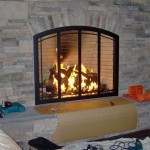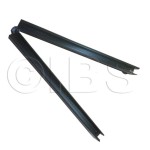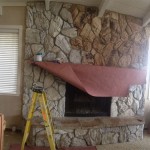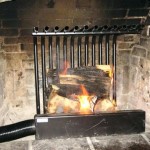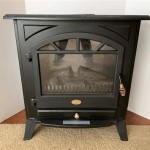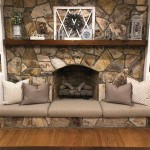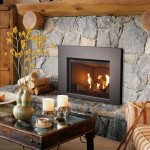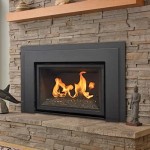Real Flame Gas Fireplace Reviews: A Comprehensive Analysis
Real Flame is a prominent manufacturer of fireplaces, offering a diverse selection of electric, gel fuel, and gas-powered models. The company distinguishes itself through its focus on realistic design aesthetics and ease of installation, often targeting homeowners seeking a convenient alternative to traditional wood-burning fireplaces. This article provides a comprehensive analysis of Real Flame gas fireplaces, examining their features, performance, advantages, and disadvantages, drawing from available product information and customer feedback.
Key Features and Product Line Overview
Real Flame gas fireplaces are typically designed as freestanding units or inserts. These units are often constructed with a steel firebox and a detailed mantel made from materials like solid wood, MDF (Medium-Density Fiberboard), or composite materials to mimic the look of traditional fireplaces. The focus on aesthetics is a significant selling point, designed to complement various home décor styles, ranging from modern to rustic.
Within the Real Flame gas fireplace line, different models offer varying BTU (British Thermal Unit) outputs, affecting their heating capacity. BTU is a measure of the heat content of fuels, and higher BTU outputs typically mean the fireplace can heat a larger space. Models can range from those suitable for small rooms to those capable of warming larger living areas. Some models include features like adjustable flame height and remote control operation for added convenience. The vents are usually strategically placed to maximize heat distribution throughout the room.
Safety features are also integral to Real Flame gas fireplaces. Many models incorporate oxygen depletion sensors (ODS) that automatically shut off the gas supply if oxygen levels in the room become too low. This is a crucial safety mechanism to prevent carbon monoxide poisoning. Additionally, some units include safety screens to prevent accidental contact with the flames.
The installation process for Real Flame gas fireplaces generally involves connecting the unit to an existing gas line. This typically requires a professional gas fitter to ensure proper and safe installation. Proper ventilation is also essential for gas fireplaces to prevent the buildup of harmful fumes. Some models may require venting to the outside, while others are vent-free, depending on local building codes and regulations. Understanding these requirements is crucial before purchasing and installing a Real Flame gas fireplace.
Performance and Heating Efficiency
The performance of Real Flame gas fireplaces is primarily evaluated based on their heating efficiency, flame realism, and ease of use. Heating efficiency refers to the percentage of fuel that is converted into usable heat. Gas fireplaces, in general, are more energy-efficient than traditional wood-burning fireplaces, as they lose less heat through the chimney.
Real Flame gas fireplaces often employ ceramic fiber logs designed to mimic the appearance of real wood burning. The realism of the flame is a key factor for many consumers, and Real Flame aims to create a realistic and visually appealing flame pattern. However, the perceived realism can vary depending on the model and individual preferences.
Ease of use is another important performance characteristic. Models with remote control operation and adjustable flame height allow users to customize the heat output and ambiance to their liking. Thermostat control is also available on select models, enabling the fireplace to maintain a consistent temperature in the room.
Maintenance requirements for Real Flame gas fireplaces are generally lower than those for wood-burning fireplaces. Regular cleaning of the burner and venting system is necessary to ensure optimal performance and safety. It is also crucial to schedule periodic inspections by a qualified technician to check for gas leaks and other potential problems.
Advantages and Disadvantages
Real Flame gas fireplaces offer several advantages that contribute to their popularity. One significant advantage is the convenience they provide. With the push of a button or the flick of a switch, users can instantly enjoy the warmth and ambiance of a fire, without the need to gather firewood, build a fire, or clean up ashes. This ease of use makes them a convenient option for busy homeowners.
Another advantage is their relatively high heating efficiency compared to wood-burning fireplaces. Gas fireplaces can deliver a consistent and controlled heat output, making them a more effective supplementary heating source. This can potentially lead to lower heating costs during colder months.
The aesthetic appeal of Real Flame gas fireplaces is also a major draw. The detailed mantels and realistic flame patterns can enhance the ambiance of any room, creating a cozy and inviting atmosphere. The variety of styles and finishes available allows homeowners to choose a model that complements their existing décor.
However, Real Flame gas fireplaces also have some potential drawbacks. The initial cost of purchase and installation can be higher than that of other heating options, such as electric fireplaces. Professional installation is typically required, adding to the overall expense. The price range of Real Flame gas fireplaces depends on the size, mantel material, and added features, such as remote control and thermostat.
Another potential disadvantage is the reliance on a gas line. This means that the fireplace will not function during a power outage, unless it is equipped with a battery backup system. Additionally, gas fireplaces produce carbon monoxide as a byproduct of combustion, so proper ventilation and regular maintenance are essential to ensure safety.
The realism of the flame, while generally considered good, may not be as authentic as that of a real wood-burning fire. Some users may find the flame pattern to be less natural or the ceramic logs to be less convincing than real wood. However, advancements in technology have led to increasingly realistic flame effects in modern gas fireplaces.
Safety Considerations and Proper Usage
Safety is paramount when operating any gas-powered appliance, including Real Flame gas fireplaces. It is crucial to follow all manufacturer instructions and local building codes to ensure safe installation and operation. Regular maintenance, including cleaning and inspection by a qualified technician, is essential to prevent gas leaks and other potential hazards.
Carbon monoxide detectors should be installed in the home to provide an early warning of carbon monoxide buildup. These detectors are relatively inexpensive and can save lives. It is important to test the detectors regularly to ensure they are functioning properly.
Proper ventilation is crucial for gas fireplaces to prevent the accumulation of carbon monoxide and other harmful fumes. Ensure that the venting system is properly installed and maintained. Do not block or obstruct any vents or openings.
Never leave a gas fireplace unattended while it is in operation. Keep flammable materials away from the fireplace to prevent fire hazards. Supervise children and pets closely when the fireplace is turned on.
If you smell gas, immediately turn off the fireplace and evacuate the premises. Contact your local gas company or fire department to investigate the leak. Do not attempt to repair the fireplace yourself unless you are a qualified technician.
Users can enhance safety by understanding the Oxygen Depletion Sensor (ODS) function. The ODS automatically shuts off the gas to the main burner if oxygen levels in the room drop to a certain level. This feature is designed to prevent carbon monoxide poisoning.
Proper usage includes following the recommendations for routine maintenance, which encompasses regular cleaning of the logs and burner. This should be done when the fireplace is cool and has been turned off for an extended period. This will allow the user to eliminate any soot or debris which accumulates. Choosing the correct type of fuel for the fireplace is equally important. Only fuels approved to be used in the fireplace should be used. Altering the fireplace or making modifications may cause a serious hazard.
Reviews For Real Flame Silverton 48 In Electric Fireplace White Pg 1 The Home Depot

Gas Fireplace Safety Real Flame

Real Flame Ashley 48 In Electric Fireplace White 7100e W The Home Depot

Electric Fireplace Modern Flames

Electric Fireplace Real Flame Review Guide

Reviews For Real Flame Ashley 48 In Electric Fireplace Blackwash Pg 1 The Home Depot

Real Flame 65 In Wall Mounted Recessed Electric Fireplace At Tractor Supply Co

Real Flame Kipling 54 In Freestanding Electric Fireplace White With Faux Marble 6030e Wm The Home Depot
Real Flame 165 1 Cm 65 In Wall Mount Or Recessed Electric Fireplace Insert Costco

Real Flame Merced 61 Contemporary Wood Grand Electric Fireplace In Black Com
Related Posts

